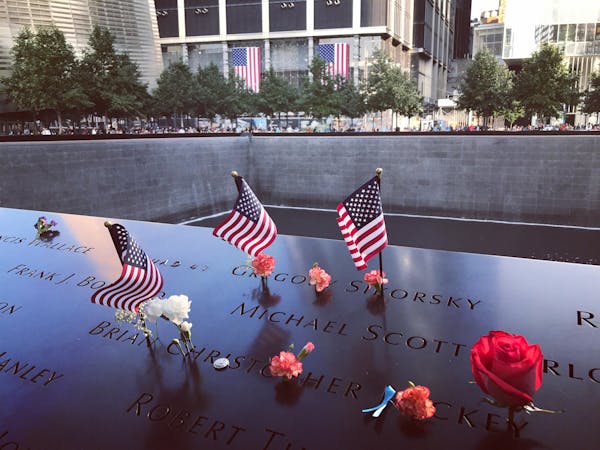Evaluation raised concerns about NDSU president before higher ed board announced he would step down
A June 17 letter from North Dakota University System Chancellor Mark Hagerott to Bresciani, summarizing his job evaluation, noted several areas of concern. Hagerott wrote he worried “the NDSU research position has been eroding over the past several years” when it comes to competing with other schools.
Possibly the most critical section was regarding Bresciani’s hiring decisions. Bresciani chose interim Provost Margaret Fitzgerald to fill the position on a long-term basis, despite the fact that she did not apply for the job. She was chosen over a pool of 100 applicants that produced five finalists. The provost oversees all academic departments at the university.
Fitzgerald did not go through the interview process, which would have allowed faculty, students and staff to ask questions in a public forum.
“The selection of a noncandidate for provost has unfortunately raised reputational risk to NDSU, a risk articulated to me by national search firms, that future nationwide candidates might be hesitant to apply for senior NDSU positions,” Hagerott wrote in his letter.
In a June 17 response letter, Bresciani expressed surprise and disappointment by the “overall negative tenor” of the evaluation’s summary. He bolstered accomplishments that went “well beyond the success of our football team.”
NDSU improved its financial health during his tenure, completed construction on several campus buildings, raised more than $400 million in five years, increased the amount of money dedicated to research and increased the size of its freshman class in 2020, Bresciani added.
The evaluation results came ahead of the State Board of Higher Education’s 6-1 decision on Tuesday, June 29, to not give Bresciani a two-year contract, despite his counterparts at other state universities and colleges getting such contracts. Instead, the board allowed him to stay on as president through the end of 2022, unless his replacement can start before that date.
Erica Solberg, an NDSU student who sits on the board, was the lone dissenting vote.
Board members did not disclose the reason for the decision, which came after a closed-door session on president contracts that lasted five hours.
Chair Nick Hacker declined to say why the board opted to not give Bresciani a two-year contract. Board member Casey Ryan also declined to comment, saying the board speaks as one through the chair.
The other board members did not respond to messages left by The Forum.
After leaving the president’s office, Bresciani will be allowed to be a distinguished professor at NDSU’s College of Human Sciences and Education, according to a contract he signed Wednesday.
The NDSU president’s annual reviews were mostly positive until this year. In June 2020, Hagerott commended Bresciani for leading the university through the coronavirus pandemic.
“It is no exaggeration to say you and your team handled a series of cascading, high-stakes decisions quickly and professionally while keeping the health, well-being and safety of our people at the top of your priority list,” Hagerott wrote.
Bresciani was one of two presidents who was given a first-of-its-kind comprehensive evaluation for university and college heads. It included a survey from staff, faculty, students and alumni on his performance.
The online survey was based on a point system with 10 being the highest score. Alumni gave Bresciani a mean score of at least eight in all areas. The separate mean scores for faculty, staff and students ranged from 3.8 to 7.5.
The other president was Minot State University’s Steve Shirley, who received positive feedback and high marks from surveys.
‘It was the right decision’
Another point of contention raised by Hagerott was the overall decline in student enrollment since Bresciani took office in 2010. In the decade before Bresciani was hired, NDSU saw a dramatic increase in enrollment, from 10,000 in 2000 to about 14,400 in 2010.
That growth slowed and eventually reversed, peaking at 14,747 in 2014 before dropping to 12,846 last fall.
Hagerott’s letter also questioned Bresciani’s ability to target nontraditional students, adapt to cybersecurity threats and adopt “approaches to diversify the NDSU enterprise stream” instead of relying on traditional approaches.
The evaluation did not mention steps taken to meet challenges in the higher education industry and to attract nontraditional students, Bresciani said in his letter.
Bresciani also defended his decision to hire Fitzgerald after saying the provost search failed. “I made my decision, and it was the right decision,” Bresciani wrote.
He pushed back on criticism that he waited to find a vice president of research, saying that faculty asked him to do so until he found a provost. He also asked for more specifics on what more he could do to fight cybersecurity threats, saying Hagerott never discussed this topic with him before.
Hagerott also said in his letter that Bresciani was hesitant to provide agricultural education to farmers and their children in western North Dakota at the request of state legislators.
NDSU faculty did not believe doing so was appropriate amid budget cuts, Bresciani wrote. The university, however, signed a collaborative ag education program with Dickinson State University to meet this demand, Bresciani noted.
In disputing unspecified concerns about adapting in a timely manner, Bresciani wrote that the university was a leader in offering online education during the coronavirus pandemic.
In a statement to the campus that discussed his eventual resignation from the position, Bresciani wrote that he would continue to lead NDSU and support the search for the next president.
The Forum’s attempts to reach Bresciani by phone have been unsuccessful and a request for an interview with him, made through an NDSU spokesperson, has not been fulfilled. Hagerott was unavailable for comment but in a statement thanked Bresciani for his years of service.
“NDSU has been fortunate to have Dr. Bresciani preside as president of NDSU, and I look forward to working with him through the remainder of his contract,” Hagerott said.
Before the board vote, Steve Swiontek, a co-chair for the fundraising campaign dubbed “In Our Hands” that raised a record $400 million for NDSU, encouraged SBHE members to renew Bresciani’s contract. NDSU has thrived under Bresciani’s leadership, and the school is in better shape now than in 2010, Swiontek wrote.
Swiontek said he struggled to see what items listed in the evaluation would result in the decision to not keep Bresciani on as NDSU’s president.
“For over a decade, NDSU has remained stable and continues to move forward on its mission without interruption, benefitting the students, faculty, staff, research and the community at large,” he wrote. “The momentum is strong and needs to continue.”
The board voted in 2016 to extend Bresciani’s contract for one year instead of giving him a two-year contract. This came after an independent investigation found issues with his handling of media rules that restricted athletics coverage for outlets that didn’t hold broadcast contracts for Bison games.
The probe found he didn’t lie when he said he didn’t know about NDSU’s media rules before they were issued, but his communication and decision-making on the matter could have been better, the report said.
In January 2017, he was named a finalist for Ohio University’s president. He withdrew his name from consideration.









